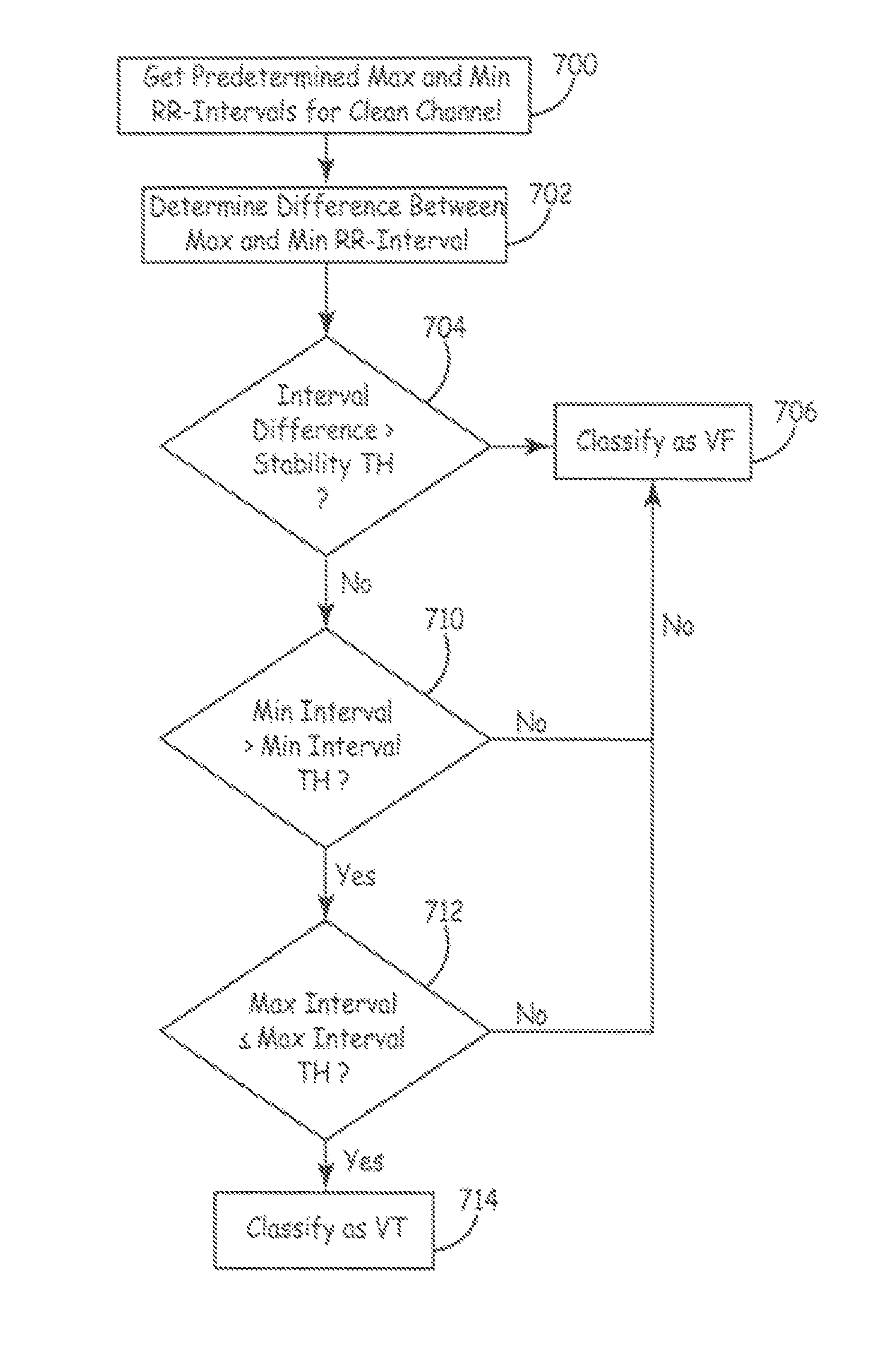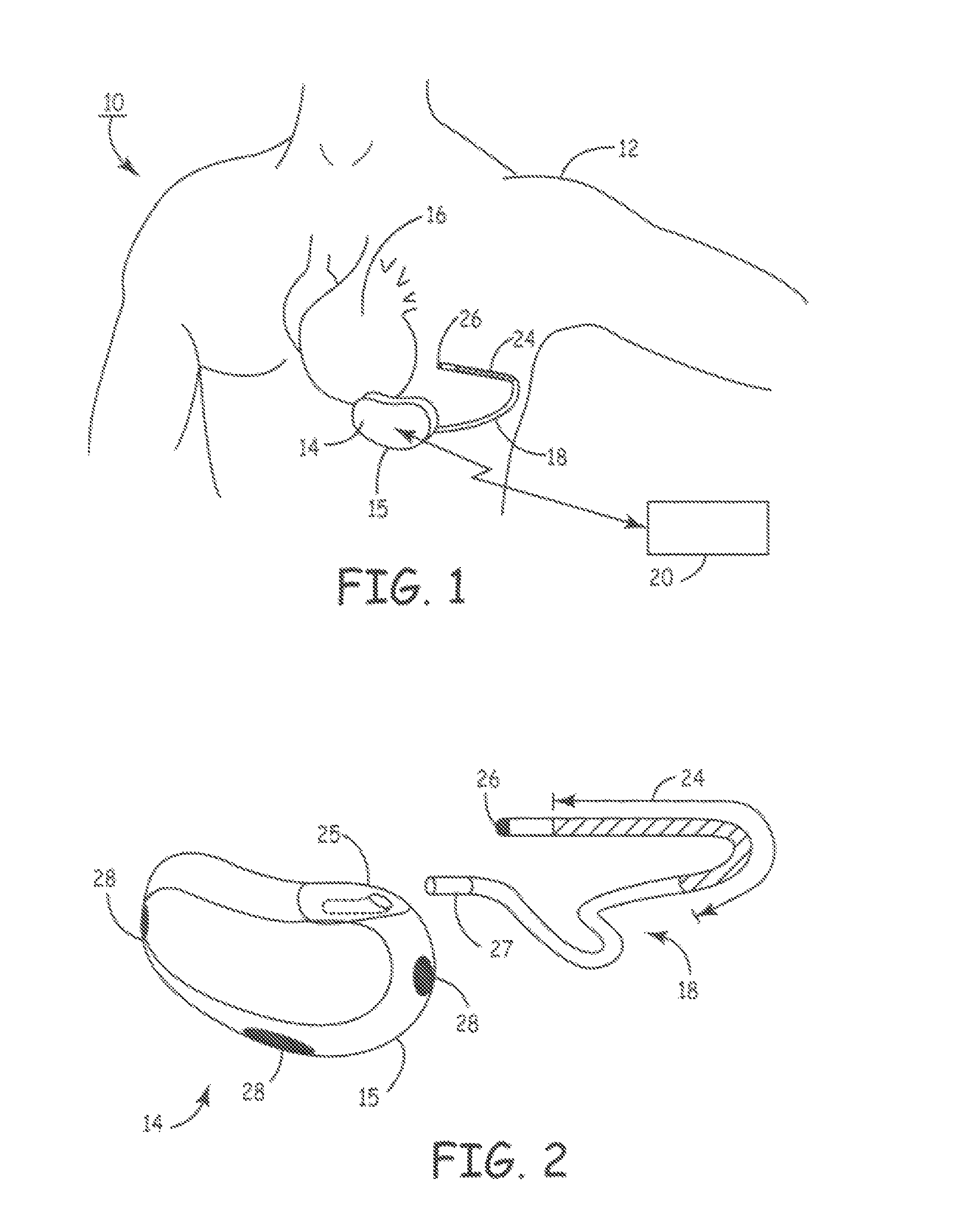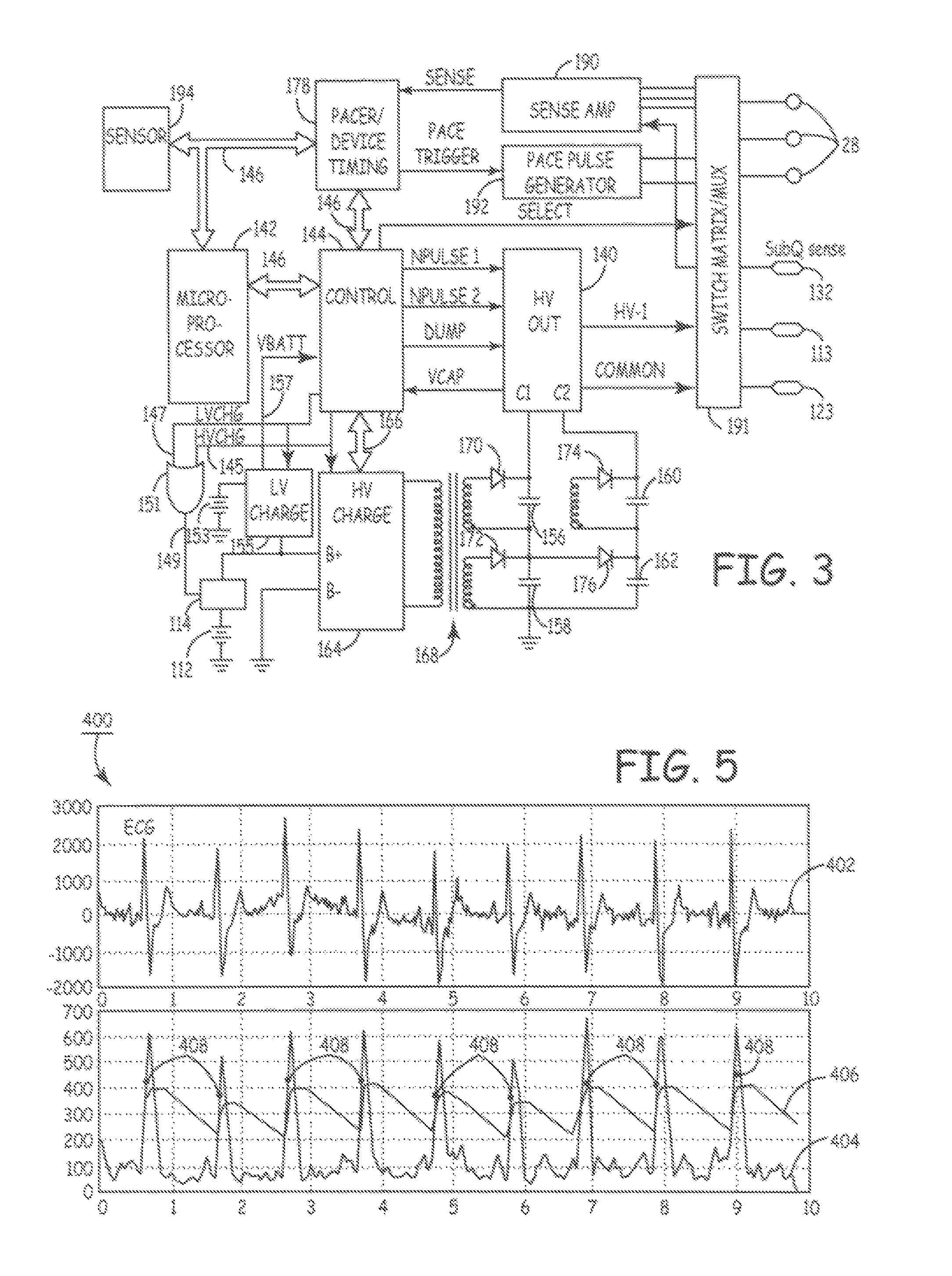Method and apparatus for detecting arrhythmias in a subcutaneous medical device
a medical device and arrhythmia detection technology, applied in the field of implantable medical devices, can solve the problems of inability to place endocardial leads, risk of future sudden death episodes, and general recommendation not recommended for pediatric cardiac patients
- Summary
- Abstract
- Description
- Claims
- Application Information
AI Technical Summary
Benefits of technology
Problems solved by technology
Method used
Image
Examples
Embodiment Construction
[0025]FIG. 1 is a schematic diagram of an exemplary subcutaneous device in which the present invention may be usefully practiced. As illustrated in FIG. 1, a subcutaneous device 14 according to an embodiment of the present invention is subcutaneously implanted outside the ribcage of a patient 12, anterior to the cardiac notch. Further, a subcutaneous sensing and cardioversion / defibrillation therapy delivery lead 18 in electrical communication with subcutaneous device 14 is tunneled subcutaneously into a location adjacent to a portion of a latissimus dorsi muscle of patient 12. Specifically, lead 18 is tunneled subcutaneously from the median implant pocket of the subcutaneous device 14 laterally and posterially to the patient's back to a location opposite the heart such that the heart 16 is disposed between the subcutaneous device 14 and the distal electrode coil 24 and distal sensing electrode 26 of lead 18.
[0026]It is understood that while the subcutaneous device 14 is shown positi...
PUM
 Login to View More
Login to View More Abstract
Description
Claims
Application Information
 Login to View More
Login to View More - R&D
- Intellectual Property
- Life Sciences
- Materials
- Tech Scout
- Unparalleled Data Quality
- Higher Quality Content
- 60% Fewer Hallucinations
Browse by: Latest US Patents, China's latest patents, Technical Efficacy Thesaurus, Application Domain, Technology Topic, Popular Technical Reports.
© 2025 PatSnap. All rights reserved.Legal|Privacy policy|Modern Slavery Act Transparency Statement|Sitemap|About US| Contact US: help@patsnap.com



